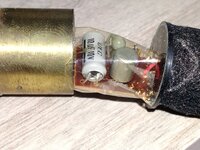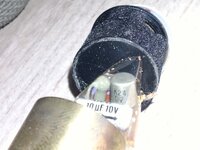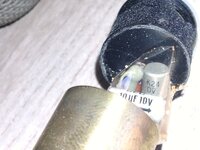Hello, and thank you for reading.
I got curious the other day and unscrewed the top of an electret condenser microphone I have and found what looks to be a germanium transistor. I was confused and surprised. This microphone is from the early 1970s, I'm thinking 1970 to 1973 based on research I've done. Anyhow, I just wanted to run it by the others; is this in fact a germanium transistor, or is it an early op amp? It seems rather late in the game to still be using a germanium transistor, no? I also seem to see a mixture of a carbon comp resistor and a carbon film! Thank you for looking.
From,
John
I got curious the other day and unscrewed the top of an electret condenser microphone I have and found what looks to be a germanium transistor. I was confused and surprised. This microphone is from the early 1970s, I'm thinking 1970 to 1973 based on research I've done. Anyhow, I just wanted to run it by the others; is this in fact a germanium transistor, or is it an early op amp? It seems rather late in the game to still be using a germanium transistor, no? I also seem to see a mixture of a carbon comp resistor and a carbon film! Thank you for looking.
From,
John



